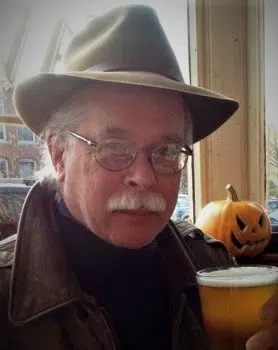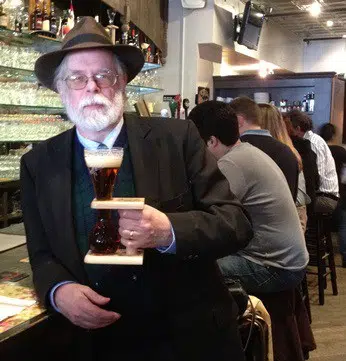The Old Growler: Good morning Peter. Thank you for taking the time to talk to me about your first homebrewing experiences, and when you learned that food was more than something to keep you alive.
The first question, of course, is when did you have your beer Epiphany?
Peter LaFrance: When I was a cadet at Norwich University in Northfield, Vermont, between 1969 and 1974, I was introduced to Canadian beer. Some of the flavors that Labatt had on the market were very tasty and slightly more alcoholic than American beers. At least that’s what we thought. However, a reading of the label would’ve shown that the alcohol content was listed by weight and not by volume. Essentially, they both had the same alcoholic content. On this side of the border, price and quantity are my favorite beer, Genesee’s two primary selling points. As I just mentioned, price trumped most other considerations. What made this a particularly attractive beer was that it came in a bottle that contained an imperial court, larger than any other bottle of beer available at the time. It was fondly remembered as a G.I. Q. (Genesee Imperial Quart.)
It wasn’t until I landed in New York City that I discovered the growing number of imported beers available on the market. However, I remember being at home on summer vacation in Ossining, New York, and liberating Pabst Blue-Ribbon, Schmitz Tiger Ale, and Ballentine India Pale ale from the old man’s cooler.
My first job in New York City was at two restaurants; the Monk’s Court, on the West Side near Lincoln Center, and the Monks Inn on East 51st St.
The next question, of course, do you remember your first homebrew?
I remember it was 1977 or 78, and I was sofa surfing with many college buddies living off-campus. One of the few books I had, given to me by my sister when she worked in a bookstore, was a book on brewing beer at home by a Canadian writer. One of my shortcomings is that if I am dared to do something, I will probably try it at least once. And so it was with homebrewing. However, I had at least one ally. He and I began searching the New York City area for homebrewing supplies. The easiest one to find was in Manhattan on spring street. An old-established wine equipment store went into the homebrewing business when it became untaxed in 1978.
Getting Our First Homebrewing Equipment
The first time we visited the store, my homebrew book told me it was necessary to list things. The counter’s person was helpful enough and offered to sell us what was considered a very advanced homebrew kit. It consisted of a 5-gallon glass carboy, a 5-gallon plastic bucket with a form-fitted lid, 6 feet of plastic hose, and an airlock for the glass carboy, a one-handed bottle capper, and 100 crown caps—all of this for just $50. We told him we would think about it and left.
After consulting the Westchester County telephone book (remember telephone books?) we discovered another shop in Elmsford, New York. It was a half hour drive from New York City, but the alternative was a two-hour trip into Connecticut. It was evident that home brewing beer was not something everyone was doing. And so we drove to Elmsford.
This was a smaller store, only recently established. We walked in and told the man behind the counter that we were interested in homebrewing. The first thing he asked us was, “What kind of beer do you like to drink?” At the time, British pale ale was just beginning to become available on draft. And so we told him, “British pale ale.”
He reached under the counter and presented large tin cans with very British looking illustrations on their labels. He explained that these were malt extracts. He went on to explain that one of them was without hops and the other one had hops. Our reaction assured him that we knew what he was talking about and knew the difference between hopped extract and non-hopped extract. We spent the rest of the next hour discussing beer and learning some of the most basic knowledge of fermentation. Yes, we did purchase a 5-gallon glass carboy, food-safe plastic bucket with a fitted lid, a hydrometer, thermometer, 100 bottle caps, and a two-handed bottle capper, both types of malt extract, and for packages of red Star yeast. I don’t think the cost exceeded $25.
I seem to remember the actual brewing taking place at an apartment in lower Manhattan rented by a homebrewing buddy. It wasn’t until 1978 or 79 that I moved to upper Manhattan to do any homebrewing in my own apartment.
We were very meticulous in our note keeping, and I seem to remember having a collection of at least 30 or 40 different recipes and variations on those recipes.
The Old Growler: Thanks for sharing with us.



Very Cool; I hope this finds you well. Stay safe.
Thanks, Chef!
This was a very interesting topic. I hope you have Peter back sometime to ask more questions.
I will do just that!